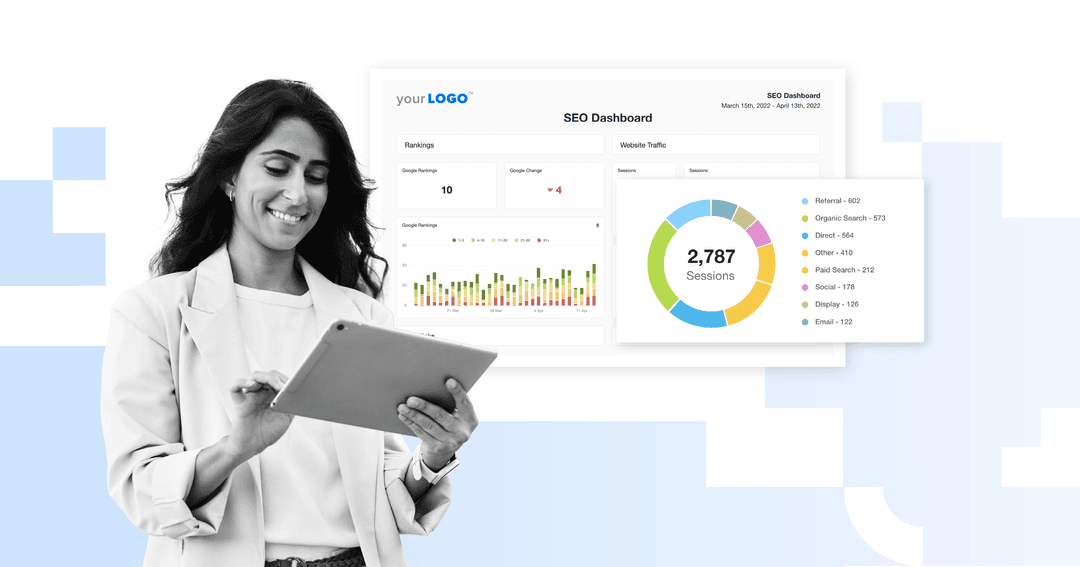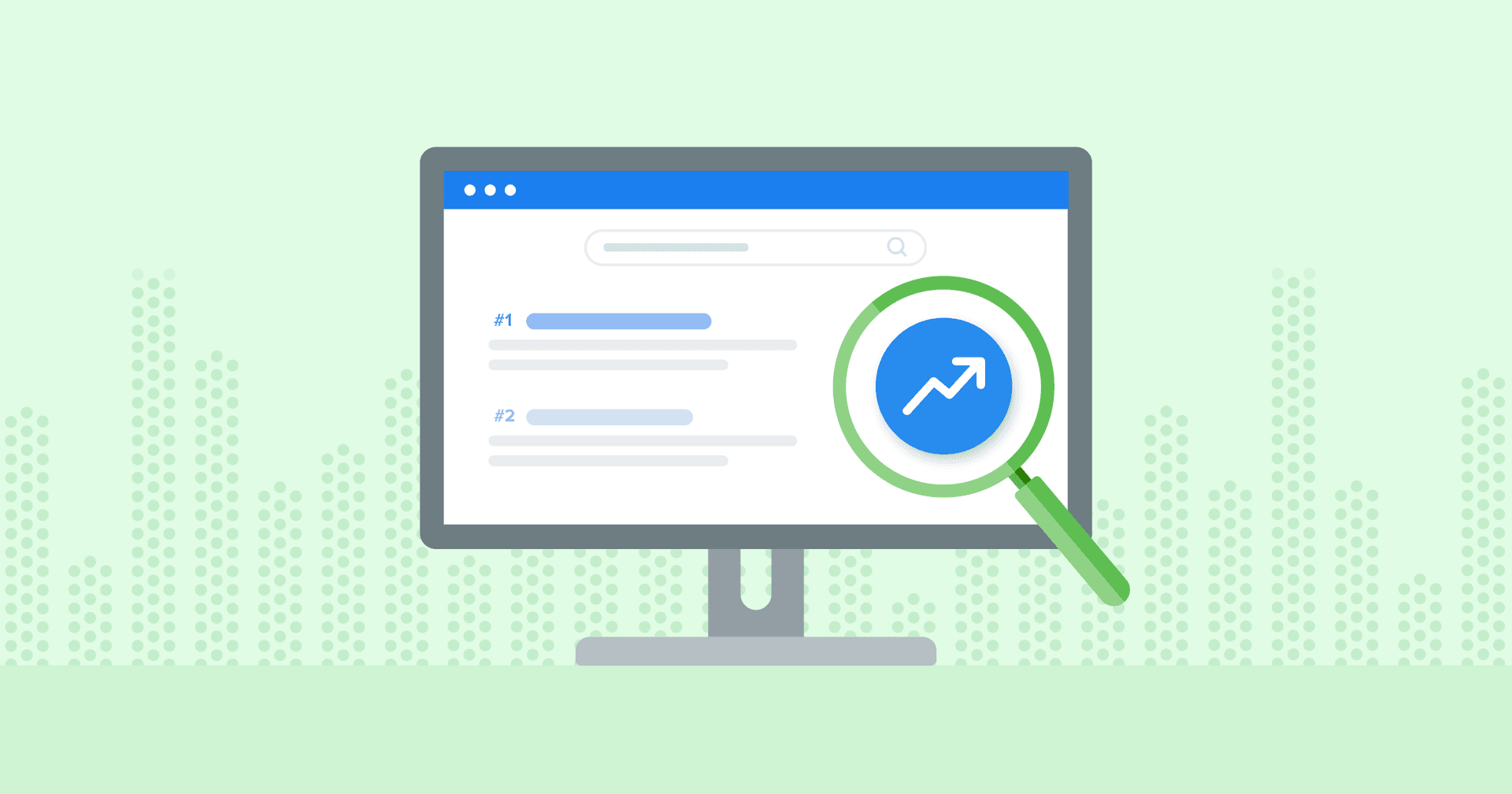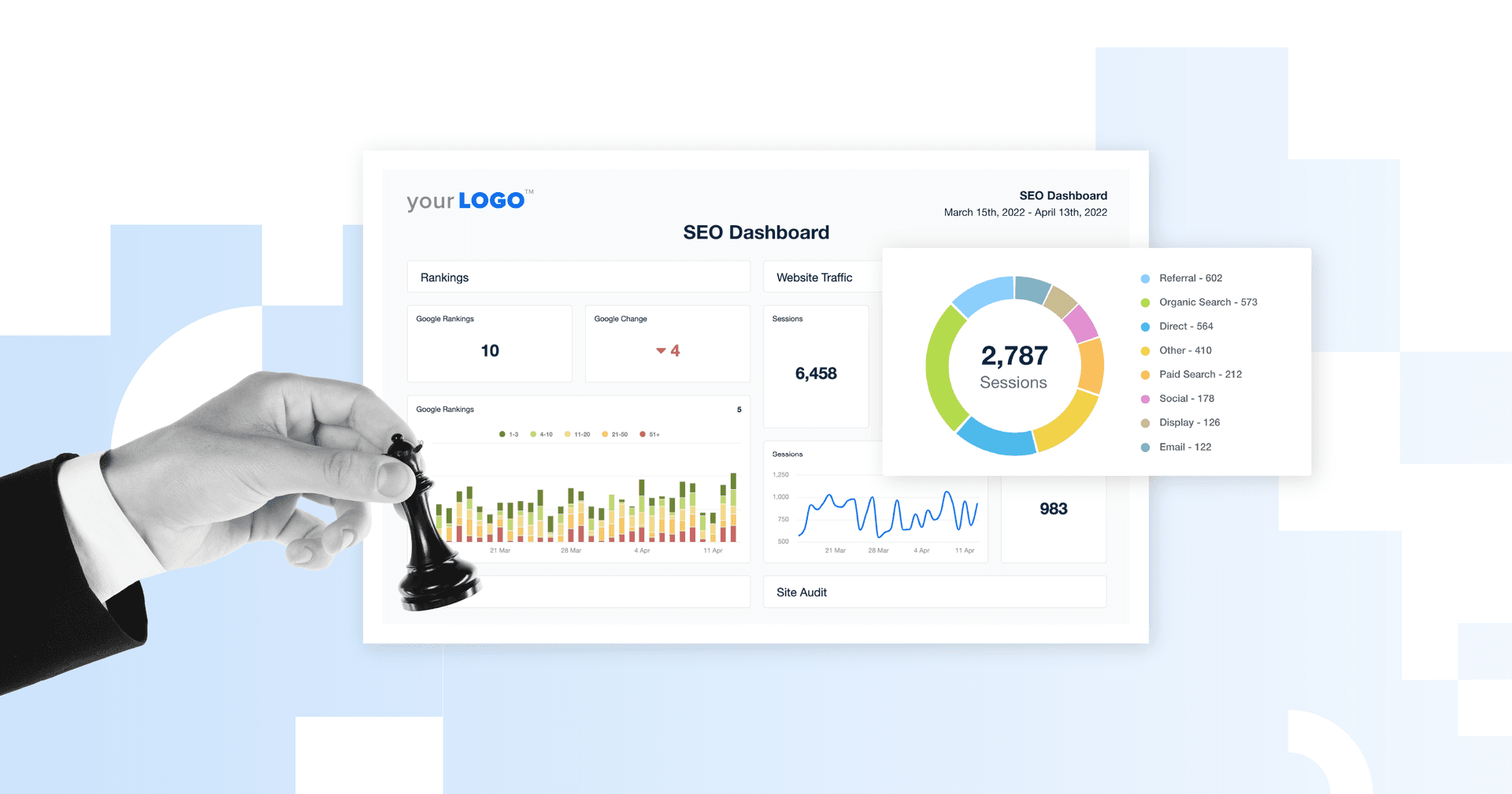Table of Contents
Table of Contents
- What Is SEO Tracking?
- Tracking Local SEO Performance
- Important Aspects of International SEO Tracking
- Rank Tracking for Enterprise SEO
- Video SEO Rank Tracking
- 5 Essential SEO Metrics Your Agency Should Track
- The Best SEO Tracking Tools & Software in the Industry
- How To Track SEO Performance for Free Through the Google Suite
- Performance Tracking for SEO Agencies: How To Use AgencyAnalytics for Client Performance & Reporting
- The Time-Saving Power of Effortless SEO Reporting
- Key Takeaways: SEO Tracking Requires a Strategy and Consistent Effort
7,000+ agencies have ditched manual reports. You can too.
Free 14-Day TrialQUICK SUMMARY:
SEO tracking measures a client’s organic search performance, analyzing key metrics like keyword rankings, organic traffic, and conversions. It helps agencies align strategies with clients' SEO goals, such as boosting visibility, increasing clicks, or driving sales. This guide covers essential SEO tracking tools, metrics, and strategies, including competitor analysis and the importance of a scalable reporting solution.
SEO tracking isn’t just about numbers; it’s about understanding what’s really driving results for organic campaigns.
Unlike old-school marketing–where performance often feels like guesswork–tracking SEO performance provides hard data, allowing your agency to see what’s working… and what’s not.
Think of it like this: SEO tracking pinpoints exactly where your client should focus their efforts. And when you’re able to act on this data and make the right changes, they’ll (hopefully) see results over time. Whether it’s a change in search rankings or increased online visibility, it demonstrates the value of your SEO services. The outcome? Better results, enhanced credibility, and increased client retention.
Of course, having all this data at your fingertips could feel overwhelming. That’s why this guide focuses on the essentials—what SEO insights matter, which tools to use, and how to share data in a way that actually makes sense to clients. Let’s cut through the noise and make SEO tracking work for your agency!
What Is SEO Tracking?
SEO tracking is the process of monitoring and analyzing how a client’s website performs in search engines. It’s used to determine which strategies drive traffic, improve keyword rankings, and increase search visibility.
For clients, SEO tracking also provides transparency. It gives them clear, data-backed insights into how your efforts are helping them achieve search visibility. But before SEO tracking starts, though, your agency needs a solid plan in place. To kick things off, it’s a good practice to ask a few foundational questions like:
Which of your products and services are most profitable?
What sets your business apart from competitors?
What types of questions do you usually get from prospective customers?
The answers to these questions should uncover keyword-rich insights, customer preferences, and possible opportunities to capitalize on.
After creating an SEO strategy, it’s important to focus on the right areas. Here’s a breakdown of the types of SEO tracking to implement.
Ranking & Position Tracking
This exercise involves monitoring keyword rankings in search engine results pages (SERPs). Higher rankings improve a website's visibility, which increases the likelihood of organic traffic. Additionally, ranking and position tracking is handy for:
Competitor Benchmarking: Compare keyword rankings against competitors to identify gaps and opportunities for outranking them.
Strategic Adjustments: Use ranking data to refine content, optimize underperforming pages, and focus efforts on high-value keywords.
SERP Tracking
SERP tracking goes beyond keyword rankings; it analyzes how a client’s website performs in various SERP features. Because of their visible prominence on the search results, they typically lead to increased clicks and organic traffic.
That said, SERP features aren't guaranteed–even if all your client’s SEO ducks are in a row. However, tracking top-performing content will show what search engine algorithms favor.
Some prominent SERP placements include:
Local Map Packs: A set of local business listings displayed on Google Maps and search results for location-based queries.
Knowledge Panels: Information boxes that appear on Google’s search results to provide quick facts about a person, place, or topic.
Video Carousels: A horizontal scrollable section in search results showcasing video content related to the query.
People Also Ask: A dynamic box in search results featuring related questions and their brief answers.
Featured Snippets: A highlighted answer box at the top of search results, extracted from a webpage to address a query directly.
Also known as "Position 0" on the SERPs, a Featured Snippet can get thousands upon thousands of eyes on your content! Featured Snippets are powerful, but you need to be very careful with how you go about getting them. Focus on high-quality content that is well structured, has proper schema attributed to it, and includes proper keywords to answer a user's question.
Rachel Jackson, Lead SEO Specialist, Wit Digital
Log File Tracking
Log file tracking involves analyzing server log files to understand how search engine crawlers interact with your client’s website. This detailed analysis allows agencies to uncover technical SEO issues and optimize site performance. Use this exercise to:
Ensure Crawl Efficiency: Identify which pages are being crawled and how often, which ensures the most important pages are prioritized.
Detect Errors: Spot issues like broken links, 404 errors, and server response problems that might prevent pages from being indexed correctly.
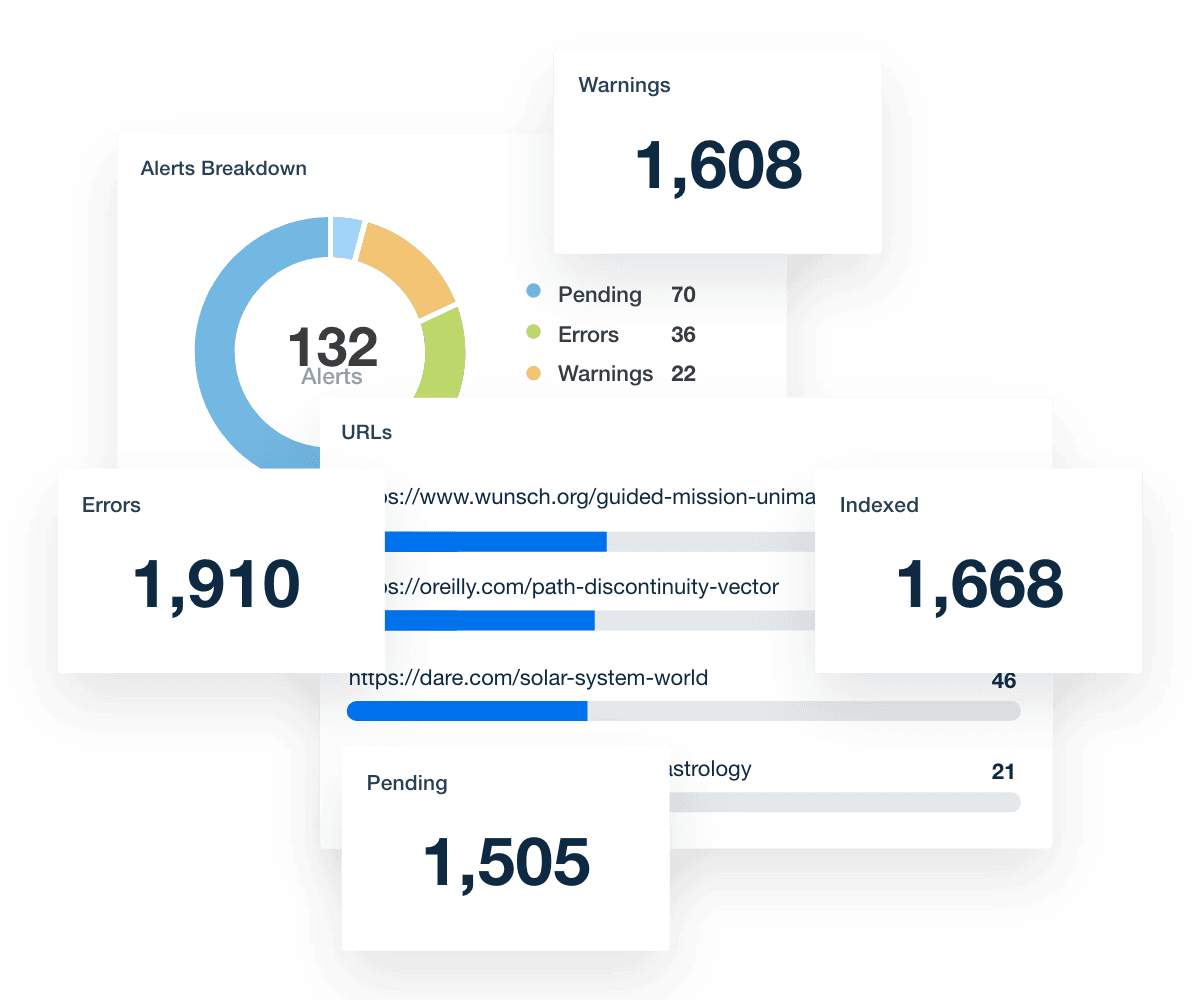
Identify crawl errors, sitemap alerts, and top keyword queries with the Google Search Console integration. Streamline SEO reporting with AgencyAnalytics–try it free for 14 days.
Tracking Cycles
Tracking cycles refer to the regular intervals at which SEO data is collected, analyzed, and reported. Use data from each tracking cycle to refine campaigns, focus on high-impact opportunities, and address potential issues before they escalate.
By keeping a watchful eye on SEO efforts, you’ll also be able to:
Monitor Emerging Trends: Identify shifts in keyword rankings, traffic, and user behavior over time, allowing for timely adjustments if needed.
Maintain Accountability: Provide clients with consistent updates on progress, which showcases the value of SEO efforts and maintains transparency.
Click Tracking
Click tracking analyzes how users interact with search results and website elements, such as links, buttons, and calls-to-action (CTAs). This data enables agencies to analyze user behavior, evaluate metadata performance, and measure headline effectiveness.
In doing so, you’ll be equipped to:
Identify High-Value Elements: Pinpoint which website elements drive the most clicks, which helps prioritize updates to key pages and links.
Optimize Conversion Paths: Analyze user navigation to identify drop-offs, refine website design, and curate content that increases conversion potential.
Action Tracking
Action tracking focuses on specific user behaviors beyond clicks (e.g., form submissions, downloads, video plays, and image clicks). It also provides deeper insight into user engagement and page functionality.
Use action tracking to:
Measure Engagement: Assess top-performed actions, place CTAs in strategic locations, and optimize page layouts to encourage further interaction.
Refine User Journeys: Identify barriers in the conversion process and streamline user pathways for improved outcomes.
Competitor SEO Tracking
Competitor SEO tracking involves analyzing the performance of rival websites in areas like keywords, backlinks, traffic, and SERP features. It’s primarily used to identify opportunities, benchmark SEO progress, and understand the broader landscape. Monitor competitor activity to:
Discover Keyword Gaps: Identify high-performing competitor keywords and determine if there are any overlooked terms to capitalize on.
Monitor Backlink Profiles: Analyze competitor backlinks to uncover link-building opportunities and strengthen domain authority.
Tracking Local SEO Performance
Local SEO is just that… local.
It involves monitoring how your client’s website performs in the areas they care about most—whether that’s a city, a state, or even across countries. This becomes even more critical for clients with multiple locations and SEO efforts (e.g., franchise restaurants).
Here are some actionable ways to approach local SEO performance tracking.
Step | Details |
|---|---|
Analyze Local Search Locations | Use SEO tools (like Ahrefs or Semrush) to identify where searches come from, focusing on specific cities or neighborhoods. |
Monitor Google Maps Rankings | Track visibility in Google Maps results to ensure your client appears in local map packs for targeted keywords. |
Use Geogrid Tracking Tools | Utilize tools like Local Falcon to visualize rankings across geographic grids and identify performance gaps. |
Optimize for Local Search Terms | Regularly review and optimize for location-specific keywords, such as “best coffee shop in [city].” |
Track Key Metrics | Focus on local search metrics like impressions, clicks, and calls generated through Google Business Profile. |
Important Aspects of International SEO Tracking
International SEO tracking goes beyond a specific location.
More specifically, this form of SEO tracking includes language-specific performance, which ensures search relevance for diverse audiences.
It involves:
Understanding Search Intent: Analyze how search behavior varies by region. What users search for in one country might differ significantly in another, even for similar products or services.
Identifying Relevant Keywords: Conduct thorough research to uncover relevant terms in different languages. Also, consider linguistic nuances, regional dialects, and slang terms that resonate with specific audiences.
Using Localized Tools: Use platforms like Google Keyword Planner and Ahrefs to segment keyword variations by region and language.
Implementing Hreflang Tags: Hreflang tags ensure that users are directed to the correct language or regional page. It also clarifies intent to search engines, which helps avoid penalties for duplicate content.
Rank Tracking for Enterprise SEO
Enterprise SEO rank tracking is inherently complex due to the scale of operations. That’s because it often includes diverse product lines, services, and geographic markets. Instead of being bogged down by all this data, take a strategic approach through hyper-segmentation. This means breaking down rank tracking by:
Product: Monitor the performance of keywords specific to each product or service. For example, Product A vs. Product B.
Country/Region: Analyze rankings in each target market (e.g., Product A in the U.S., Product A in Germany).
Language: Differentiate rankings for multilingual regions (e.g., Product A in French-speaking Canada vs. English-speaking Canada).
Specific Keyword Groups: Assign unique keyword sets to each product, market, and language combination (e.g., “Product A - Germany” and “Product B - U.S.”).
Video SEO Rank Tracking
Video SEO rank tracking means monitoring the performance of video content on search engines and other platforms (e.g., YouTube, TikTok).
While marketers typically optimize for search, focusing on additional channels broadens reach, enhances audience engagement, and drives traffic from diverse sources.
There are more than 800 million videos on YouTube. If you don't optimize your video to be found on YouTube and in search engines, you'll most likely have little success with video marketing. As they say, there's no point in buying an expensive car if you just keep it locked up in the garage.
Will Mullins, SEO Specialist, Will Mullins Search Engine Optimisation Services
For best results, focus on high-value keywords, audience-relevant topics, and platform-specific optimization strategies.
5 Essential SEO Metrics Your Agency Should Track
A key part of SEO tracking is adopting a data-driven approach. Be sure to decide on:
Which metrics you’re going to track.
How often you’re going to review these metrics.
How you’re going to report the performance to clients.
If you’re not sure where to begin, here are the top five SEO metrics to keep an eye on.
1. Keyword Rankings
Search engines are constantly changing. That means target keyword rankings will also change.
To stay one step ahead, use a rank tracker tool to monitor keyword rankings in search engines. Monitor keyword trend changes on Google and Bing–all in a few clicks!
Regular keyword tracking is an excellent way to monitor the overall direction of your client’s SEO efforts. It also provides a clear snapshot of which pages need improvement.
Easily track of keyword ranking changes, top queries, and top-performing pages. Add structure to your agency’s SEO tracking process–try AgencyAnalytics, free for 14 days.
2. Organic Search Traffic
The success of an SEO campaign is measured by the amount of organic search traffic it drives.
Higher organic traffic may improve search engine rankings, greater brand visibility, and a stronger brand reputation. It doesn’t happen by chance, though. Consistent efforts are needed, like a stream of authoritative inbound marketing content, optimizing on-page elements, acquiring high-quality backlinks, and regular keyword research.
The payoff is worth it, though. Over time, investing in organic search traffic delivers lasting benefits, such as steady business growth and reduced dependence on paid ads.
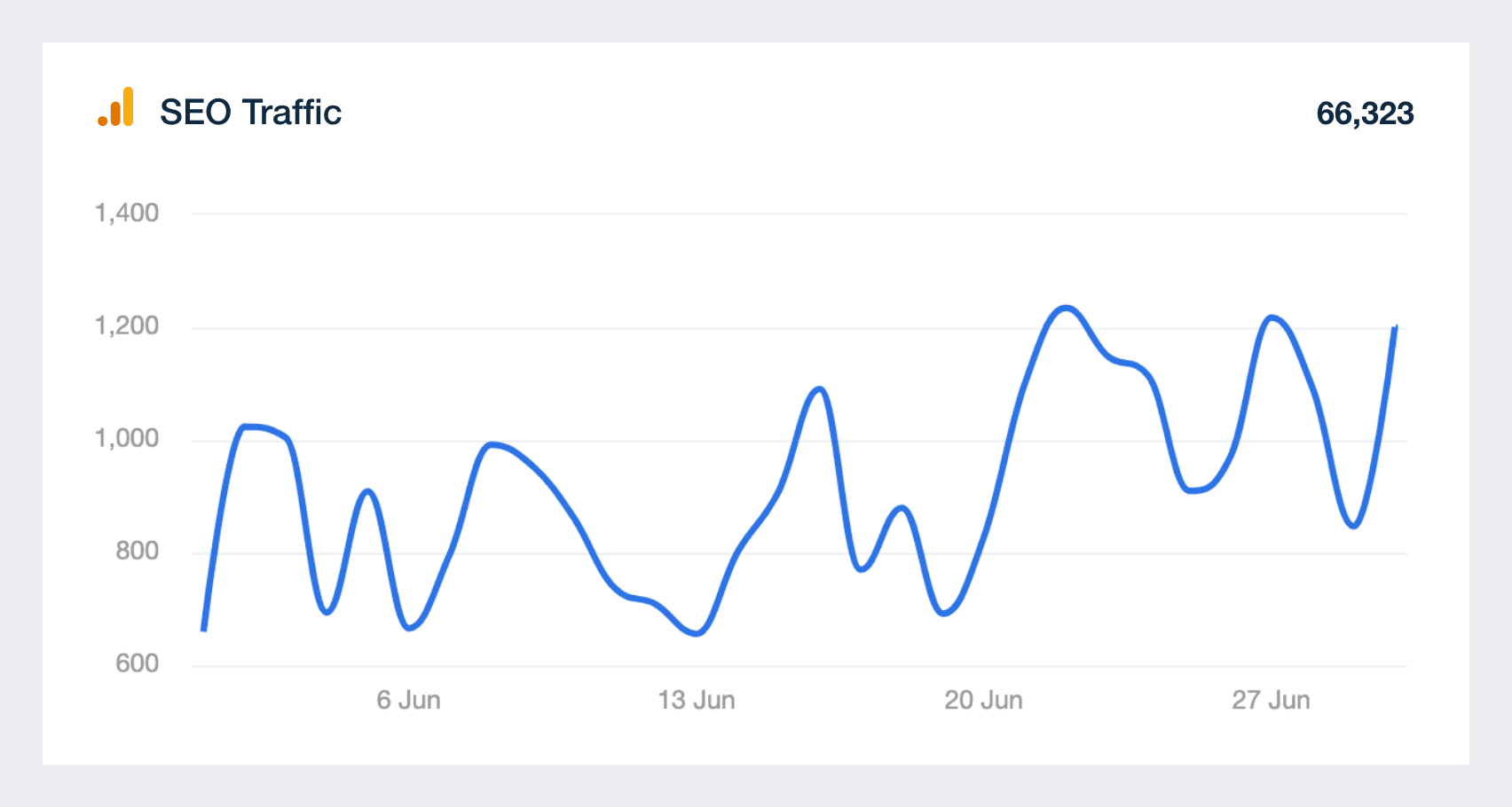
3. Organic Conversions
Driving organic traffic is important, but the quality of that traffic matters just as much. While improved visibility might be an end goal, many clients simply care about actions that directly impact their business (e.g., sales or event sign-ups). Therefore, monitoring conversions is one tactic to gauge the quality of organic traffic.
That said, different clients have different conversion goals. For example, one might prioritize online purchases, while another is interested in phone inquiries. It underscores the importance of determining their objectives well in advance.
To track conversions from organic traffic, set up a relevant “Event” in Google Analytics (which we’ll cover soon).
4. Competitor Analysis
Tracking competitors is another valuable indicator for any SEO campaign.
It helps identify gaps and opportunities in your client’s SEO strategy, such as underutilized keywords, new content ideas, or areas where competitors may have a weaker presence. It also provides insight into industry trends, ensuring your client stays competitive in their niche.
We always encourage our clients to be famous for something their prospects genuinely care about. Keyword research will tell you what your prospects care about–competitor analysis will give you information on how to stand out.
Warren Thompson, Co-Founder and Managing Director, Ollo Metrics
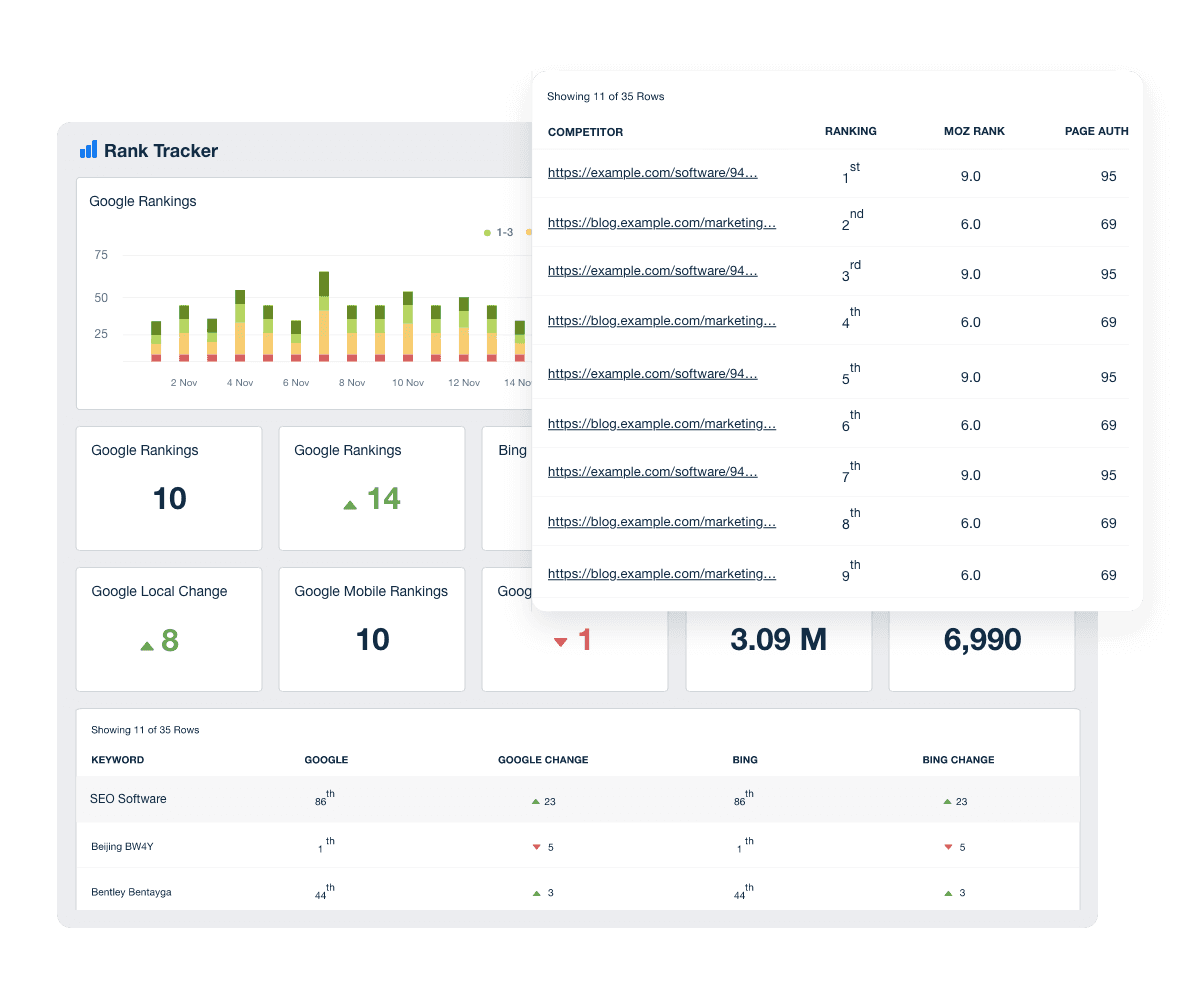
5. SEO Site Health
Maintaining an SEO-friendly website is essential for achieving high search rankings.
On-page and technical issues may hinder your client's progress toward top search results, making it critical to identify and resolve them.
That’s where using an SEO site audit tool comes in (like Google Search Console, for example). It’s a way to conduct regular SEO checks, address technical issues, and ensure client websites are in tip-top shape. By proactively managing site health, you’ll improve search engine rankings, enhance the user experience, and prevent potential penalties from search engines.
The Best SEO Tracking Tools & Software in the Industry
Whether free or paid, SEO tracking tools provide insights to optimize performance and track progress. Here’s a list of top tools used by agencies like you.
Free Tools
Agencies often rely on free tools in their early stages, as these resources offer a foundational framework and a straightforward introduction to SEO tracking.
Here are three popular ones:
Google Analytics: This tool offers in-depth insights into website traffic, user behavior, and conversions. It’s essential for understanding key SEO analytics, like how organic traffic contributes to client goals.
Google Search Console (GSC): Use GSC to monitor Google search performance, identify indexing issues, and provide valuable keyword data for tracking rankings.
Looker Studio: Formerly known as Data Studio, this tool helps agencies create dashboards and visualize performance data.
Google Analytics and Google Search Console are staples for SEO analysis–even for more mature agencies. And while Looker Studio is a good starting point for reporting, it may become a hindrance as your client base grows.
That’s because as data volume increases, you’ll likely need a more extensive list of integrations and capabilities. In these scenarios, it’s best to invest in a paid solution (like the ones below).
Paid Tools
Paid SEO tools offer advanced features that help agencies streamline tracking, analysis, and reporting–here are some top-notch ones to consider.
AgencyAnalytics: This comprehensive reporting platform is tailored specifically for agencies, making it an excellent choice for client reporting. AgencyAnalytics integrates with various SEO tools, automates data retrieval across 80+ platforms, and offers a range of pre-built dashboards and reports. It also offers agency-centric features like AI-powered data analysis, industry-specific reporting benchmarks, and Smart Reports.
Ahrefs: This SEO tool is renowned for its backlink analysis and keyword-tracking capabilities. It’s also a favorite among agencies for competitive analysis and content planning.
Semrush: Use this platform to streamline keyword tracking, conduct site audits, and more. It’s also ideal for tracking backlink performance and analyzing long-term SEO trends.
Moz: This tool's key features include rank tracking, link analysis, and keyword research. It’s also user-friendly, making it ideal for agencies that are new to SEO tracking.
Keyword.com: As the name implies, this platform specializes in keyword rank tracking. It’s beneficial for agencies that need detailed ranking data across cities or countries.
SERPStat: This budget-friendly tool offers keyword tracking, competitive analysis, and site auditing. It’s great for agencies seeking starter SEO capabilities at a lower price point.
With countless SEO tools on the market–and new ones emerging every year–selecting the right platform depends on your agency’s needs. That said, these top tried-and-true tools have consistently delivered results and are certainly worth the investment.
How To Track SEO Performance for Free Through the Google Suite
Most SEO clients want to rank on Google. So naturally, it makes sense to set up Google Analytics and Google Search Console.
Here are quick reference guides for these two SEO platforms.
How To Set Up Events in Google Analytics
In Google Analytics, all interactions (e.g., page views, button clicks) are tracked as events–here’s how to configure them in your client’s account.
1. Create a New Goal
Head to Google Analytics and select the relevant GA4 property. Then, click on “Admin” in the left-hand menu, followed by “Data Display” and “Events.”
At the top right of the Events screen, hit “Create Event,” and define a new event based on existing data.
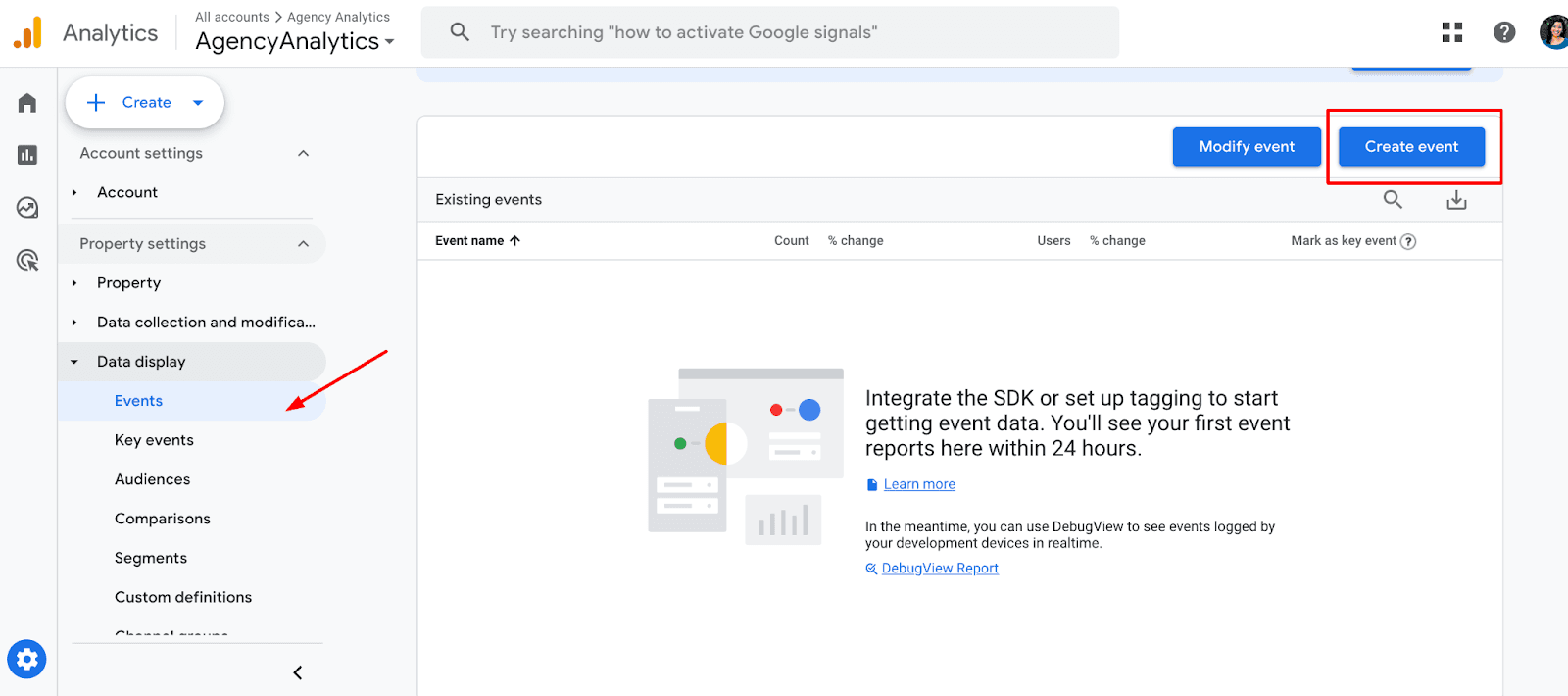
2. Set Up the New Event
Next, click the “Create” option at the top right corner.
Provide a meaningful name for the new event (e.g., form_submit or video_played). Then, define the conditions under which this event will trigger.
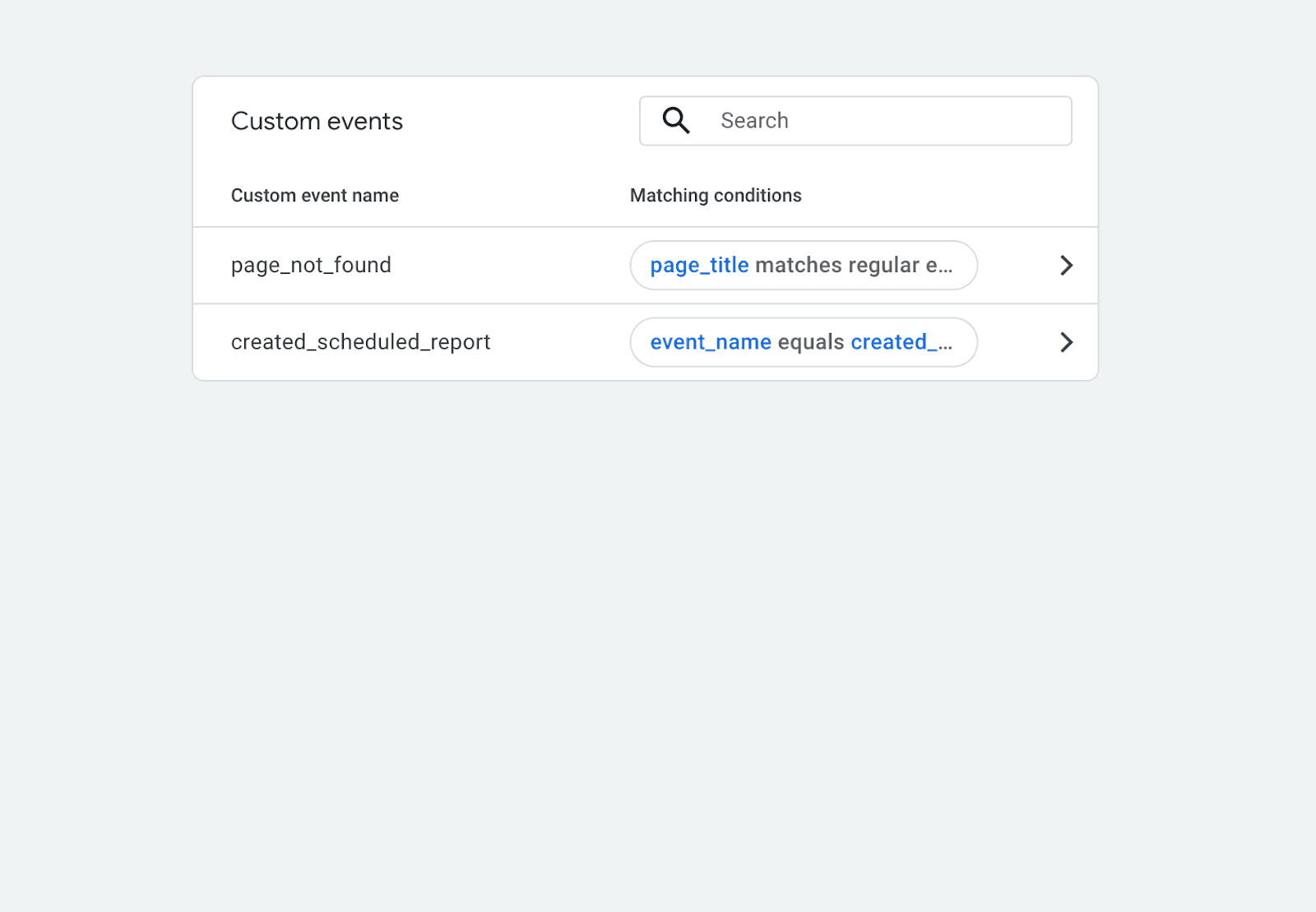
For example, say your client wants to track video plays on their latest product release. In this case, the conditions might be:
Parameter: video_played
Operator: equals
Value: video_start
This ensures the event is triggered when this specific video starts playing. Save the event, and–if needed–mark it as a conversion in the “Conversions” section.
How to Track Organic Traffic With Google Analytics
Next, let’s look at how to track organic traffic in Google Analytics.
Start by clicking “Reports” and “Acquisition” in the left sidebar. Then, click on “Traffic acquisition: Session default channel group.”
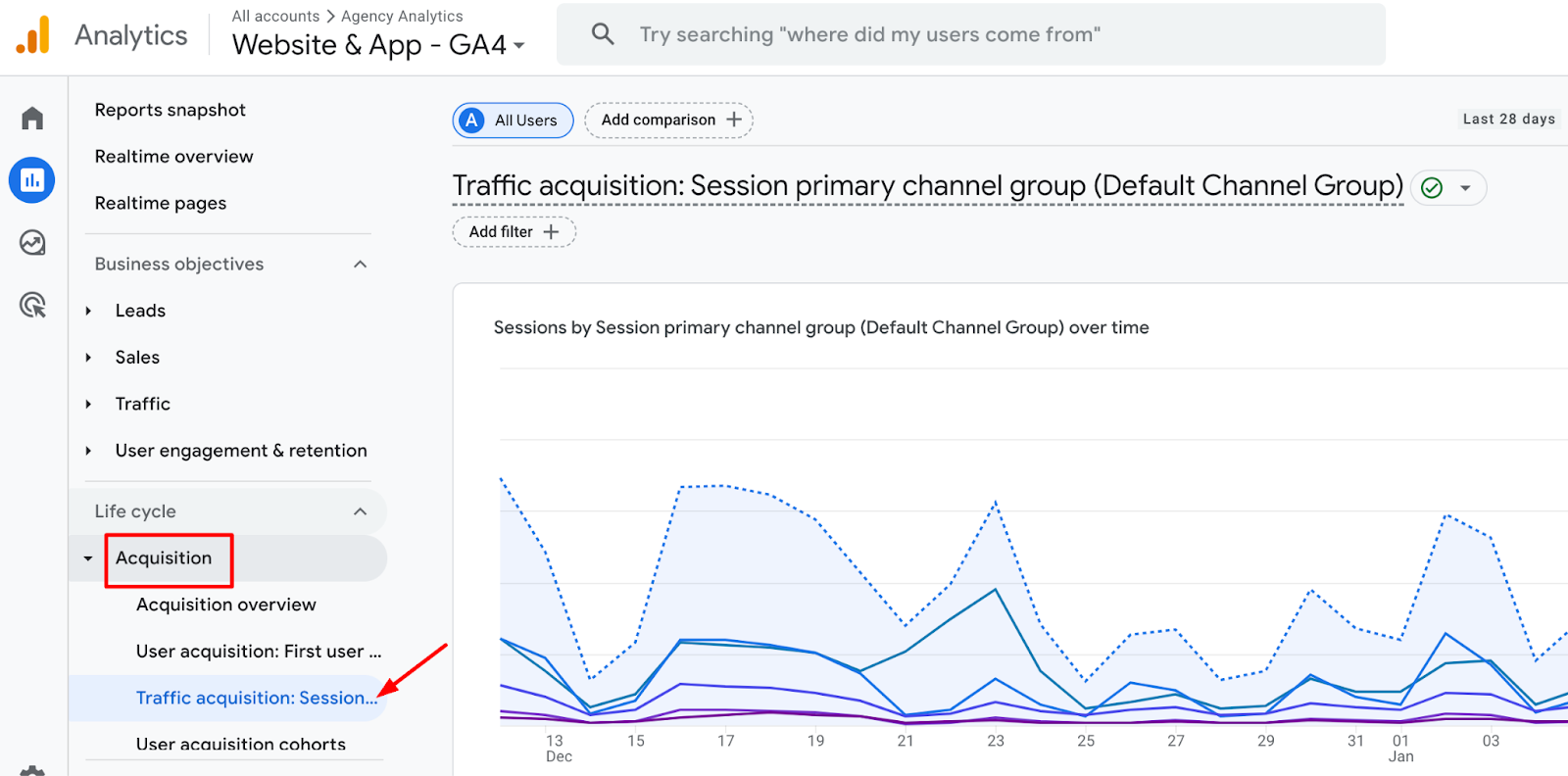
Scroll past the graph, and you’ll see a table that includes data for all traffic sources, including “Organic Search.” You’ll also see key metrics, such as sessions, engagement rate, and more.
Instead of digging through the platform, it’s also helpful to use an automated Google Analytics dashboard that consolidates this data for you.
Google Search Console
Monitor your client’s search traffic and quickly spot website issues with Google Search Console (GSC).
GSC also tracks SEO-related insights, like which queries, keywords, and specific pages drive the most traffic. Here’s exactly what your agency should track on GSC.
1. Top Queries
To find the top search terms driving website traffic, click “Performance” in the left tab. From there, look at the first tab below the performance chart called “Queries.”
Toggle on “Average CTR” and “Average Position” to review all the data for each query simultaneously.

2. Top Pages
The next tab over from “Queries” is “Pages.”
Use this option to segment the highest-performing pages by impressions and clicks. That way, you’ll know which ones to prioritize when optimizing the user experience.
3. Click-Through-Rate (CTR)
CTR is another valuable metric to track over time, as it often helps your agency identify quick wins for clients.
For example, say a client's page ranks on the first page, with a high number of impressions but a low CTR. There’s low-hanging fruit here–simply changing the title or metadata might actually increase traffic.
Now that we’ve reviewed two valuable tools from the Google Suite, let’s look at how to use them in AgencyAnalytics.
Performance Tracking for SEO Agencies: How To Use AgencyAnalytics for Client Performance & Reporting
While AgencyAnalytics is known as an all-in-one reporting platform, digital marketing agencies often rely on it for built-in SEO tools.
By combining an SEO reporting platform with the tracking capabilities of the Google Suite, you’ll offer your clients a much more comprehensive service. Let’s review a few search engine optimization tracking tools and SEO report templates built into AgencyAnalytics.
Rank Tracker Tool
One of the best ways to monitor how your client’s SEO strategy is paying off is with a keyword rank tracking tool. Since search engines are constantly changing, doing this manually is not ideal.
Instead, use the Rank Tracker tool in AgencyAnalytics to automatically pull data from various SERPs, such as Google and Bing.
In a few clicks:
Create data visualizations of keyword ranking trends over a specific time frame.
Track keyword rankings based on multiple locations and languages (which is especially useful for local SEO campaigns).
Provide tremendous SEO insights to your clients and prove your worth.
Get that extra edge by using the AgencyAnalytics Rank Tracker Tool to monitor your clients’ SEO campaigns. It’s free when you sign up for a 14-day trial.
Majestic
Use the Majestic integration in AgencyAnalytics to monitor the progress of off-page SEO efforts, link-building campaigns, and new versus lost links.
In addition to backlink profiles, this tool tracks more advanced metrics like Trust and Citation Flow. That way, you’ll have a more in-depth assessment of backlink quantity and quality. Once you’ve set up this integration, add these metrics to an automated SEO report in a few clicks.
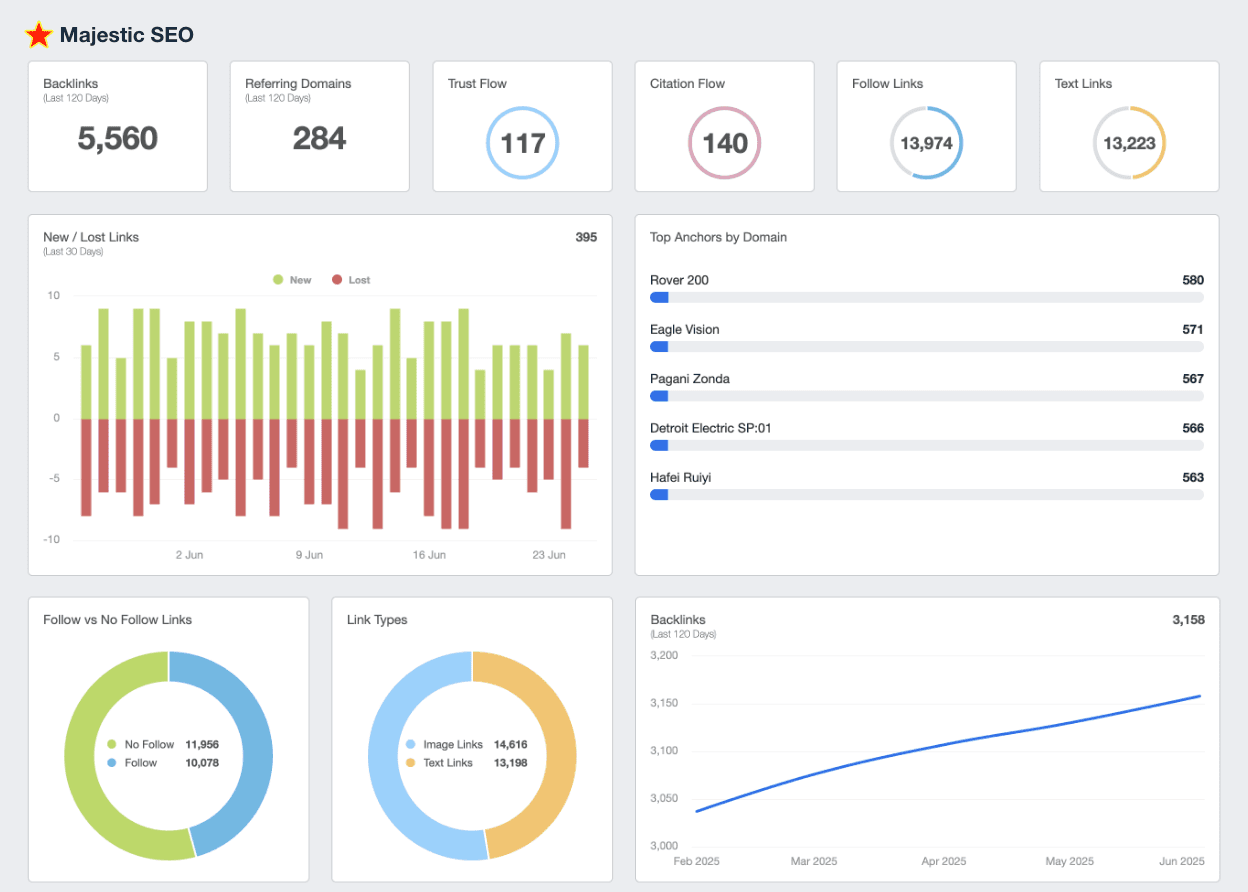
SEO Site Audits
Website audits are one of the best ways to find SEO wins and find quick fixes.
To use an SEO Site Audit Tool, simply enter a URL. Then, analyze, discover, and eliminate any issues affecting rankings. In particular, a few of the most common website issues include:
404 errors
Duplicate images
Broken links
To keep on the pulse of SEO performance, decide on a regular SEO audit cadence (e.g., monthly) and even consider offering it as a one-off service. This ensures you’re always on top of the SEO metrics influencing your client’s organic search results.
Plus, AgencyAnalytics integrates with top SEO audit tools like Google Search Console, Google Lighthouse, Moz, and Google PageSpeed. Access all the SEO metrics you need in one place!
Competitor Analysis
Analyzing competitors is another valuable exercise for any client's SEO campaign.
By identifying what their closest competitors are ranking for, you’ll quickly identify new opportunities that may have gone unnoticed. More specifically, this includes:
Comparing the total number of backlinks for each competitor.
Comparing your client’s Trust Flow and Citation Flow to competing websites.
Crawling competitor sites to make recommendations for any needed site modifications.
Use AgencyAnalytics in conjunction with SEO competitor analysis tools to assess your client’s backlink profile, identify possible content gaps, and improve their overall SEO strategy. With integrations like Moz, Semrush, Ahrefs, and Majestic, you’ll have solid, data-rich SEO insights at your fingertips.
The Time-Saving Power of Effortless SEO Reporting
When dealing with multiple clients, preparing in-depth SEO reports for clients often feels like a relentless clock-chewing monster. For starters, it involves extracting the most valuable information, formatting it into an engaging narrative, customizing reports… you know the drill.
Why waste time on tedious administrative tasks? Use a white label SEO report template to streamline the entire process and create a consistent experience.
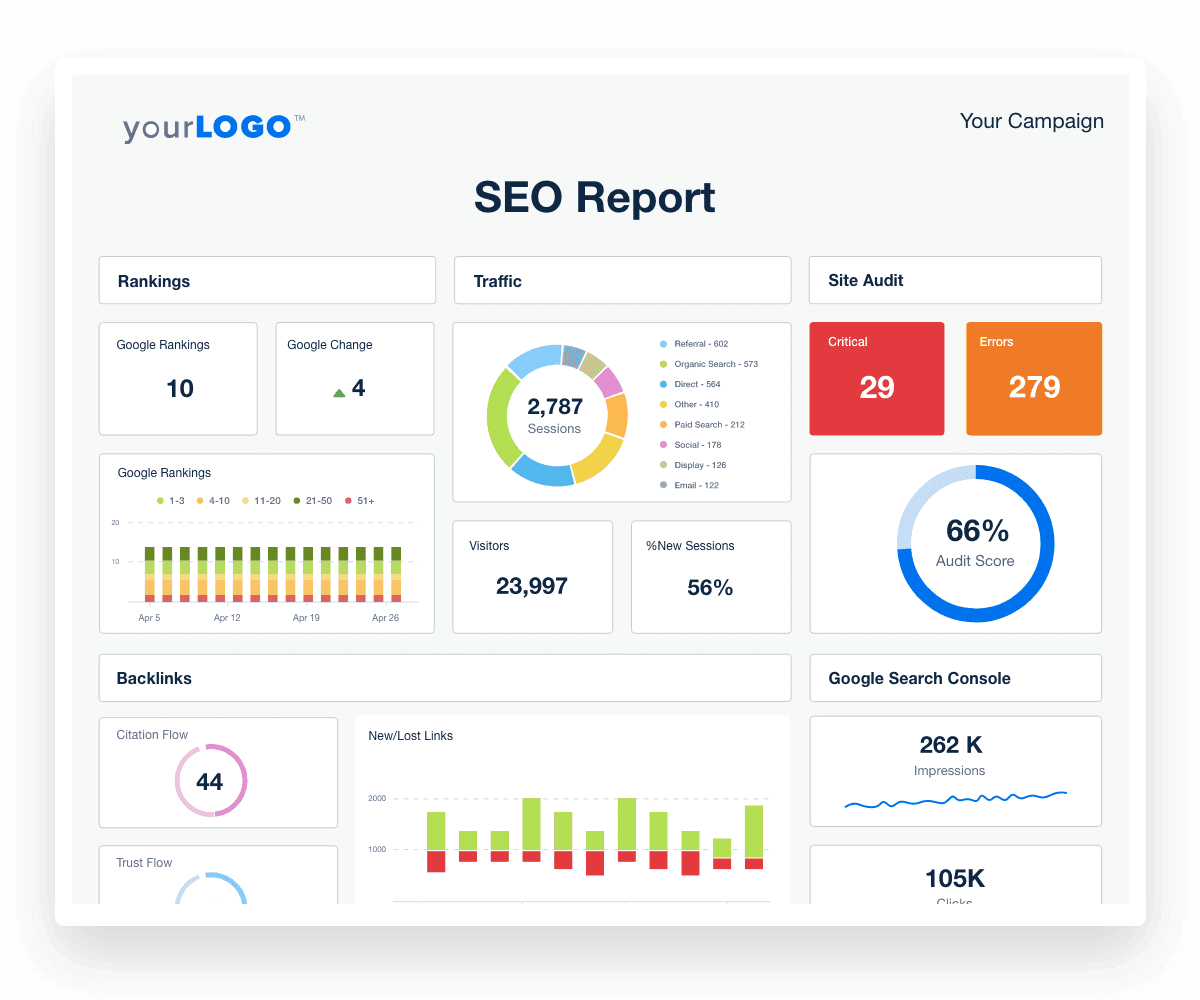
Use this professional SEO report template to streamline and improve your agency's SEO reporting. Try AgencyAnalytics free for 14 days.
FAQs About SEO Tracking
Still have questions about SEO tracking? Don’t worry... we’ve got you covered!
SEO is measured by tracking key performance indicators (KPIs) like organic traffic, keyword rankings, backlinks, and engagement metrics. Tools like AgencyAnalytics comprehensive set of SEO tools and integrations centralize this data, making it easy to assess overall performance and identify areas for improvement.
A strong SEO tracking cycle involves daily monitoring of critical metrics, weekly trend analysis, and monthly in-depth performance reviews. This ensures ongoing optimization, helps identify issues early, and keeps clients informed with clear reporting.
Top SEO tracking tools include Google Analytics for traffic insights, Google Search Console for indexing and technical performance, and Ahrefs, Moz, or SEMrush for keyword and backlink tracking. AgencyAnalytics integrates with these platforms, streamlining SEO reporting in one dashboard.
Essential SEO metrics include organic traffic, keyword rankings, domain authority, backlink growth, CTR, bounce rate, and conversion rate. Prioritizing these KPIs provides a clear view of what’s driving performance and where improvements are needed.
A great SEO report includes traffic trends, ranking changes, backlink analysis, and key insights on campaign performance. With AgencyAnalytics, agencies automate client reports, ensuring clarity and transparency while saving hours of manual work.
Key Takeaways: SEO Tracking Requires a Strategy and Consistent Effort
As we’ve discussed, one of the best ways to demonstrate the value of your agency's SEO efforts is through consistently tracking performance and reporting on the results.
SEO performance tracking gives your agency an objective view, letting you know which campaigns are working and what needs improvement.
To recap, be sure to:
Start with the Google Suite, including Google Analytics, Google Lighthouse, Google Page Speed, and Google Search Console.
Decide on your client’s top SEO metrics to track beforehand.
Track real-time data via a pre-built SEO dashboard. Additionally, use a pre-built SEO report to visualize data and share results.
White label your SEO reports to reinforce your agency’s brand and demonstrate professionalism.
Instead of toggling between multiple platforms or getting lost in a sea of SEO data, use a tool like AgencyAnalytics. Stream SEO metrics into a centralized hub, access easy-to-understand visualizations, and even view benchmarking data across 150,000+ campaigns–all with one tool.
AgencyAnalytics is an invaluable asset for any SEO agency. The platform has seamlessly scaled our reporting processes, enabling us to efficiently handle a growing client base without compromising quality.


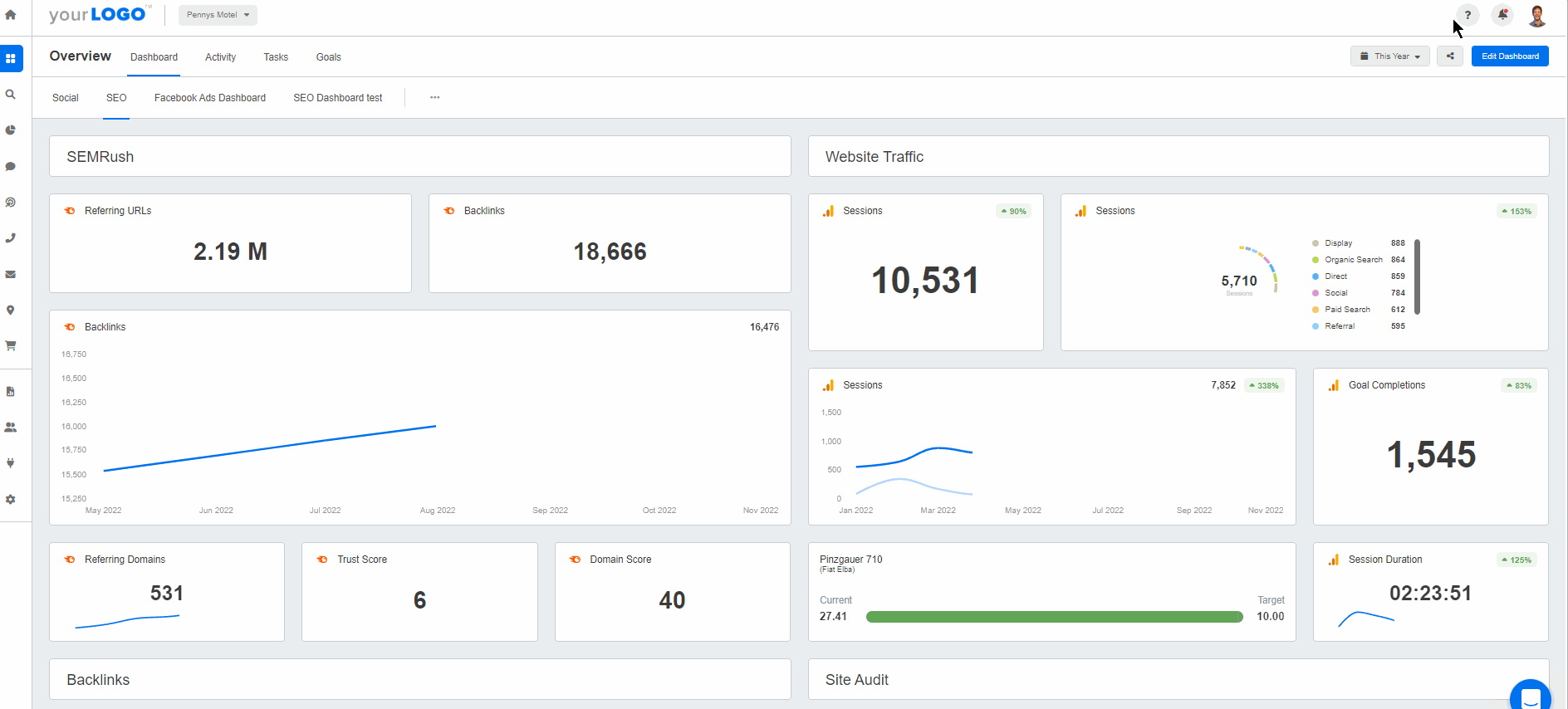
Tracking SEO performance doesn’t have to be a headache. Streamline data tracking, share actionable insights, and elevate your value proposition–try AgencyAnalytics today, free for 14 days.

Written by
Faryal Khan is a multidisciplinary creative with 10+ years of experience in marketing and communications. Drawing on her background in statistics and psychology, she fuses storytelling with data to craft narratives that both inform and inspire.
Read more posts by Faryal KhanSee how 7,000+ marketing agencies help clients win
Free 14-day trial. No credit card required.



